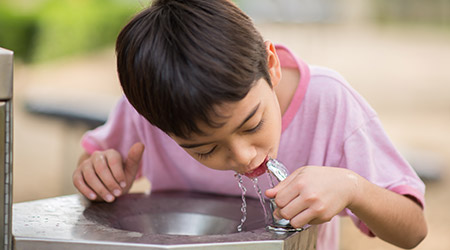
Many K-12 Schools Dealing with Lead Drinking Water
April 3, 2019
An array or risks, from asbestos and other airborne contaminants to volatile organic compounds in building materials, pose risks to occupants of institutional and commercial facilities. One risk has attracted more attention in recent years is lead in the drinking water of K-12 schools, and a new report shines a light on the magnitude of the problem.
Millions of children nationwide are in danger of drinking lead-contaminated water – in their own school. Moreover, at least 24 million children in the United States are at risk of losing IQ points due to low levels of lead exposure, according to a new report from the U.S. Public Research Interest Group Education Fund and Environment America Research & Policy Center.
More than two-thirds of the 31 states surveyed received failing grades in their efforts to make inroads into the contamination problem, the groups found in this follow-up to a 2017 report of the same name, according to the New York Daily News. Even the ones addressing the issue are not ridding their delivery systems entirely of lead, the report found, even though there is no such thing as a safe level of the neurotoxic metal, especially when it comes to children.
“As more schools test their water, they are finding lead,” says Emma Dietz, clean water associate with Environment America Research and a co-author of the report, in a statement. “So waiting for more tests to confirm that our children are drinking water laced with lead is unconscionable. It’s time to shift our approach from reactive to proactive.”
Dan Hounsell is editor-in-chief of Facility Maintenance Decisions and FacilitiesNet.com.
Next
Read next on FacilitiesNet












